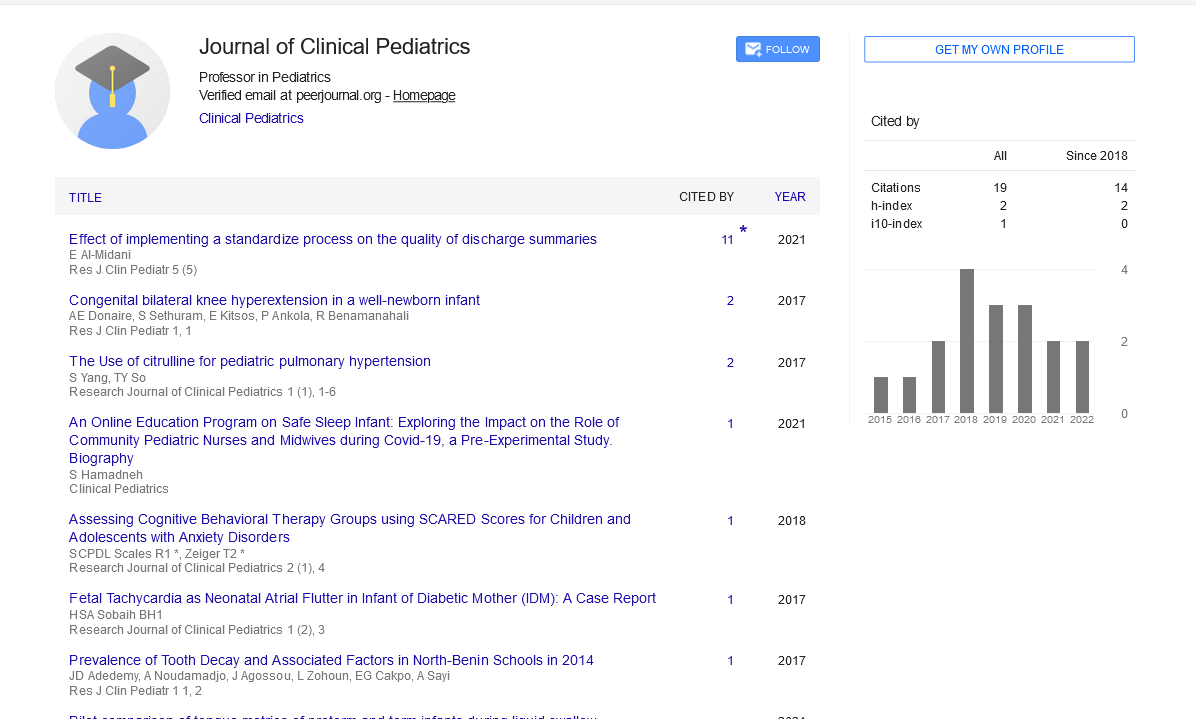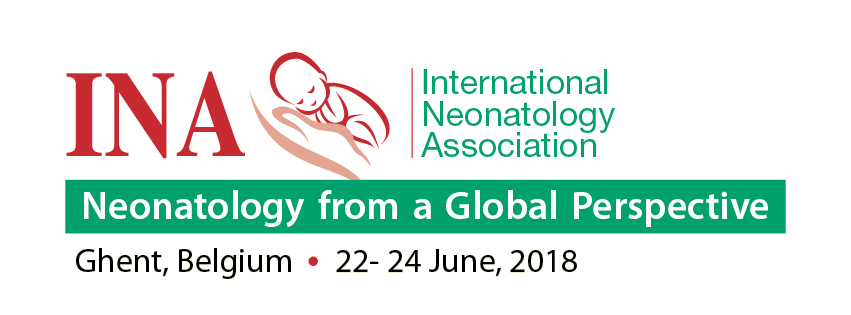Commentary, Res J Clin Pediatr Vol: 6 Issue: 2
Obstructive Sleep Apnea and Short Lingual Frenulum in Pre-Pubertal Children
Christian Guillemin Ault*
Department of Pediatrics, Stanford University, Stanford, USA
*Corresponding Author: Christian Guillemin Ault
Department of Pediatrics, Stanford University, Stanford, USA
Email: cguil@stanford.edu
Received date: 28 February, 2022, Manuscript No. RJCP-22-56274;
Editor assigned date: 02 March, 2022, PreQC No. RJCP-22-56274(PQ);
Reviewed date: 14 March, 2022, QC No RJCP-22-56274;
Revised date: 24 March, 2022, Manuscript No. RJCP-22-56274(R);
Published date: 31 March, 2022, DOI: 10.4172/rjcp.1000124.
Citation: Ault CG (2022) Obstructive Sleep Apnea and Short Lingual Frenulum in Pre-Pubertal Children. Res J Clin Pediatr 6:2.
Keywords: Lingual Frenulum
Introduction
Early childhood or facial growth may be hampered by an abnormally small lingual frenulum. This may narrow the upper airway, which is a malleable tube, increasing the risk of collapse, especially during sleep. 27 participants with non-syndrome short lingual frenulum were observed in a retrospective analysis of prepubertal children treated for suspicion of obstructive sleep apnea. The findings were linked to larger adenotonsils and/ or facial development abnormalities in the children. Children with a short frenulum who were not treated experienced aberrant tongue function early in life, which had a secondary impact on or facial growth and Sleep Breathing Disorders (SDB).
Analysis of treatment results after the presence of SDB revealed the following: The Apnea Hypopnea Index (AHI) of children who had adenoton sillectomy without frenectomy improved, however the irregular breathing was not completely resolved. When frenectomy was combined with T and A, similar outcomes were observed. Finally, frenectomy did not result in AHI normalization in children aged two and up who did not have enlarged adenotonsils. SDB and mouthbreathing develop early in life as a result of alterations in or facial growth caused by factors such as a short lingual frenulum. Early detection and treatment of a short frenulum, preferably at birth, would aid normal or facial growth. In many youngsters, my functional therapy combined with nasal breathing education is required to achieve regular breathing during sleep. Early in childhood, a short lingual frenulum can cause aberrant or facial growth, which is a risk factor for the development of SDB. In the presence of a short lingual frenulum, careful monitoring for irregular breathing during sleep is recommended.
Oral Facial Digital Syndrome
Beckwitz-Weideman syndrome, oral facial digital syndrome, cleft palate, optiz syndrome, and other syndromes have been linked to abnormally short lingual frenulums. Many of these diseases are linked to Obstructive Sleep Apnea (OSA) and irregular breathing during sleep. However, they are most often isolated, with a 3:1 male-tofemale ratio and a reported prevalence of 5% at birth. Studies on the consequences of a short frenulum have found that it hinders suction, chewing, swallowing, and frequently results in speech difficulties. Protocols for evaluating the lingual frenulum in infants and children have recently been published. The importance of a short lingual frenulum in modifying the position of the tongue, especially early in life, was underlined in life, and impairs oral facial development. There is secondary association with anterior and posterior cross bite, disproportionate growth of the mandible, and abnormal growth of the maxilla. Treatments for short lingual frenulum have been proposed and involve lingual frenectomy.
The anatomical changes seen with short lingual frenulum are related to the interdependence between function and form as indicated by Melvin moss: The observed anatomical oral facial changes lead to development of abnormal anatomic support of the upper airway. The upper airway is a collapsible tube submitted to negative intrathoracic pressure during inspiration; during sleep there is an increased risk of collapsibility due to the change of muscle tone related to sleep stages and state along with the recumbent position associated with sleep.
We performed a retrospective study of children and teenagers referred for suspicion of Sleep-Disordered Breathing (SDB) during the last five years, and identified from our de-identified database, individuals with short lingual frenulum. We considered the associated anatomical changes (including the presence of enlarged adenotonsils and other oral facial changes), the recommended treatments, and the outcome of these treatments. This retrospective study of anonymous data was approved by the IRB.
Investigating Obese Syndromes in Children
The de-identified charts of children, age 2 years to 17 years, referred for suspicion of SDB were selected. Obese and syndromes children were eliminated from the review. To be included in the analysis, charts contained information on initial complaints leading to consult with usage of pediatric sleep questionnaire, report of clinical evaluation of oral facial findings indicating investigation of tonsils using the Friedman scale, investigation of subjective upper-airway opening using the Mallampati-Friedman scale, evaluation of inferior nasal turbinate’s, dental crowding, presence of over jet and/or overbite, and determination of "facial harmony" with frontal measurements. If nasal allergies were suspected, a consult with an allergist for treatment was obtained, and if orthodontic problems were suspected, results of evaluation by a specialist were available. Indication of short lingual frenulum and its potential association with speech swallow, or mastication problems were outlined. Such impairment may have occurred during early childhood, and treatment of the secondary consequence (such as speech therapy) may have been implemented without addressing the primary cause (short lingual frenulum).
All patients had in-laboratory diagnostic Poly Somno Graphy (PSG) that included the following: EEG (4 leads), EOG, chin and leg EMG, ECG (one lead), and body position. The respiration was monitored using nasal pressure transducer; mouth-breathing with thermos-couple; chest and abdominal movements with inductive plethysmography bands, diaphragmatic-intercostal, and rectus-oblique muscle EMG; pulse oximetry (Massimo) from which both Oxygen Saturation (SaO2 ) and finger-plethysmography were derived; and continuous video monitoring. The conclusion of the testing was abnormal breathing during sleep with indication of the treatment plan.
Post treatment follow-up was available indicating:
a) Selected treatment
b) Changes compared to baseline, including questionnaire data
c) Post-treatment PSG findings
Based on the results obtained, a follow-up decision contained any further treatment recommendations and subsequent follow up information including PSG data.
Analysis of Sleep and Respiratory Scoring
The information was gathered and organized using spreadsheets. According to the American Academy of Sleep Medicine (AASM-2007), the sleep and respiratory scoring of PSGs followed the pediatric scoring recommendations published criteria for determining the presence of nasal flow restriction. During sleep, the amount of time spent mouth-breathing was also assessed as a proportion of total sleep time. We identified 27 patients with association of short lingual frenulum and SDB who met entry criteria. The mean age was 11.4 years (range: 2 years to 16 years). Children presented with symptoms of SDB such as snoring, poor sleep, and fatigue but also a history of symptoms associated with short lingual frenulum such as problems with speech, swallowing or suction, particularly early in life. Children with speech problems may have been sent to speech therapy, but none of the children had frenulum treatment. As can be seen in 10 children had enlarged tonsils (Friedman scores of 3 and 4), five children had been recommended to consult an orthodontist due to evident crowding of dentition, 22 children presented with an abnormal mallampatifriedman score of 3 or 4. In all cases, there was presence of a high and narrow hard palate and distortion of the "harmonic face” with either a longer lower third of the face or reduction of the middle third compared to the other thirds.
 Spanish
Spanish  Chinese
Chinese  Russian
Russian  German
German  French
French  Japanese
Japanese  Portuguese
Portuguese  Hindi
Hindi 
